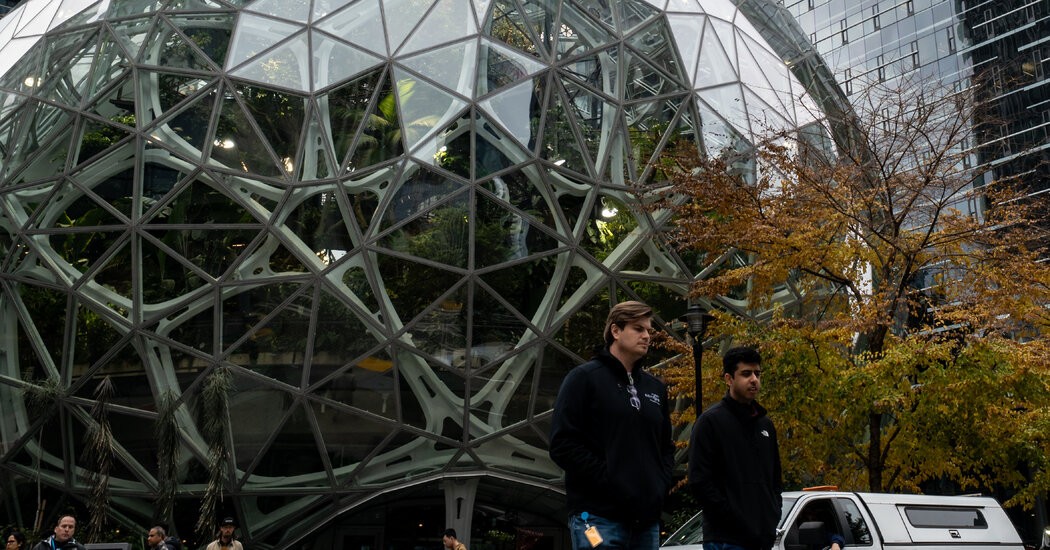Recent mass layoffs at tech giants like Amazon, Microsoft, and Google, coupled with similar cuts at other corporations including Target and UPS, have sparked anxieties about an “AI apocalypse.” The fear is that artificial intelligence will rapidly automate jobs, leaving millions unemployed. While the anxiety is understandable, experts believe the reality will be more nuanced than a sudden mass displacement of workers by robots.
Amazon’s layoff announcement, for example, pointed to AI as a driver of organizational change: “we’re convinced that we need to be organized more leanly, with fewer layers.” This language suggests a streamlining process where AI enables companies to function with fewer human resources in specific roles. However, the current wave of layoffs likely reflects broader economic pressures and company-specific restructuring rather than wholesale automation of white-collar jobs.
The Gradual Transition: Disruption vs. Domination
Rather than a sudden, catastrophic event, experts predict the integration of AI into the workforce will be gradual and unevenly distributed across industries. Mert Demirer, an economist at MIT, explains that new companies embracing AI will likely see faster adoption and restructuring because smaller processes are more agile to change. Established companies, while experimenting with AI tools, are moving at a slower pace due to their entrenched structures and bureaucratic hurdles.
So, where does the fear come from? Several factors contribute to the perception of an imminent AI-driven job apocalypse:
- Hype: The media frequently sensationalizes AI’s capabilities, creating unrealistic expectations about its immediate impact.
- Limited Awareness: Many companies are still exploring the practical applications of AI, leading to confusion about its true potential and limitations.
- Economic Uncertainty: Layoffs in various sectors often trigger anxiety that any new technology, like AI, is directly responsible for job losses.
The Real Impact: Efficiency, Not Elimination
While large-scale job displacement by AI might be overblown, it’s crucial to acknowledge the tool’s growing influence. AI assistants are already streamlining tasks in fields like coding, drafting documents, and generating marketing copy. This can lead to increased efficiency and potentially reduce the need for some roles as companies optimize workflows.
Gil Luria, an analyst covering Microsoft and Amazon at D.A. Davidson, points out that these tech giants are making cuts partly to reinvest profits into AI infrastructure. “They want to convince shareholders that they’re investing in a responsible manner,” he explains.
The McKinsey Global Institute’s research echoes this sentiment, finding that while most companies have started using generative AI tools, only a small percentage report significant impacts on their earnings yet.
The New Landscape: Agility and Specialization
Instead of mass unemployment, the transition to an AI-powered workplace is likely to involve:
- Job Transformation: Existing roles will evolve to incorporate AI tools, requiring workers to adapt and upskill.
- Emergence of New Roles: Specialists in developing, maintaining, and ethically overseeing AI systems will be in high demand.
- Competitive Pressure: Companies that lag in adopting AI risk losing market share to more agile competitors who leverage its capabilities.
Andrew McAfee, a principal research scientist at MIT’s Sloan School of Management, draws parallels with the early days of electrification. Initially, factories merely replaced steam engines with electric ones without fundamentally changing their structure. It was only when entrepreneurs conceived new layouts and processes – like Henry Ford’s assembly lines – that electricity truly revolutionized manufacturing. Similarly, AI’s potential may not be fully realized until companies reimagine work structures around it.
The legal profession offers an example of this emerging shift. Traditional law firms rely on large teams billing by the hour. Meanwhile, startups are using AI to deliver legal services with drastically fewer human lawyers per client. Omar Haroun, CEO of Eudia Counsel, a so-called AI-native law firm, states: “We’re actually trying to prove that one knowledge worker can do the work of 10.”
Conclusion: Adaptability is Key
While mass layoffs driven solely by AI are unlikely in the near future, the technology’s influence on the workplace is undeniable. The key takeaway for individuals and companies alike is adaptability. Continuous learning, upskilling, and a willingness to embrace new ways of working will be essential for navigating this evolving landscape. Companies that prioritize agility and invest strategically in AI will likely thrive, while those clinging to outdated models risk falling behind.
